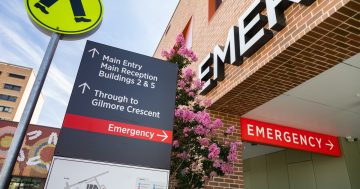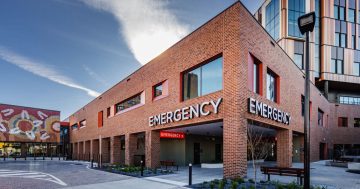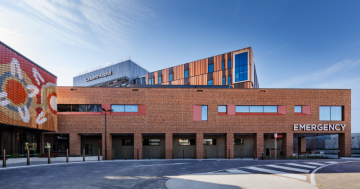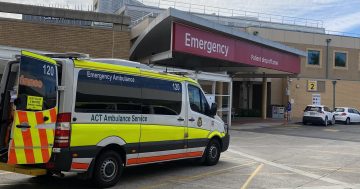
Health Minister Rachel Stephen-Smith has confirmed a large increase in demand for public hospitals in the last month. Photo: Michelle Kroll.
Patients are being treated in hallways and paediatric beds are being converted for adult use following a demand surge at Canberra’s public hospitals over the last month.
Health Minister Rachel Stephen-Smith confirmed the overwhelming surge on Tuesday (25 May) but could not pinpoint a reason for the increased demand.
Ms Stephen-Smith said health ministers from around the country had a “lightbulb moment” when one mentioned increased pressure on hospital wait times and surgeries at a minister’s meeting last month. The minister was met with a chorus of agreement from their counterparts from around Australia, she said.
“Everyone is experiencing this,” Ms Stephen-Smith said.
“We do not really know what is causing it. It is probably a combination of factors, but it is absolutely the case that Canberra Hospital has been very busy over at least the last four weeks.”
Calvary has also experienced increased demand, but not to the same level.
Know more about this story? You can email Dominic at dgiannini@region.com.au.
Ms Stephen-Smith said treating patients in hospital corridors was “not a long-term arrangement”.
“That is kept to the absolute minimum and is always managed with patient safety and quality of care,” she said.
The conversion of paediatric beds was one of the strategies employed by the hospital’s leadership to manage the increased demand, she explained.
Canberra Health Services (CHS) confirmed that an eight-bed vacant paediatric ward is being temporarily used for some adult patients, but it will likely only be required until tomorrow morning (26 May).
According to CHS, the use of these beds has not impacted any paediatric services or access to them.
Ambulance bypasses at the Canberra Hospital have also been utilised when demand on the emergency department forced the hospital to take some patients to Calvary.
Hospital wait times and capacity have perenially plagued the ACT Government.
The latest Quarterly Performance Report data found that less than half of patients received treatment within the clinically recommended time for their urgency (triage) category.
The ACT Government will also conduct an audit of the endoscopy waiting list after it blew out to 7200 people and reports emerged of at least two people developing cancer while remaining on the list for more than a year.
Health chiefs from around the country have been asked to compile data from the latest surge which will then be analysed at this week’s Health Minister’s meeting to identify any underlying trends or issues.

Shadow Health Minister Giulia Jones. Photo: Dominic Giannini.
Shadow Health Minister Giulia Jones said chronic bed shortages and long waiting times stemmed from a decade of underfunding.
It was frustrating to watch things in the health system continue to deteriorate, Ms Jones said.
“There does not seem to be any hope on the horizon at this point in time. The system is not big enough for the population … and nurses are finding work twice as hard because of the culture [of bullying],” Ms Jones said.
“This adds to the stress of overcrowding when the hospital is full and when there are not enough beds or operating theatres.”
Ms Jones also took aim at the government’s delayed Canberra Hospital expansion. She said it had been promised at three elections, and by the time it opens, it would not be able to accommodate the increased demand.
“It will be full as soon as it opens. And while we have agreements with private hospitals [for surgeries], we cannot rely on private hospitals because the government does not control them,” she said.
Chief Minister Andrew Barr said he wanted to see more investment in the public health sector from the Commonwealth Government following the recent federal budget.
He wanted to see the cost-sharing breakdown increase to a 50-50 split between the Commonwealth and states and territories.
“This is a perennial issue we need to resolve between three governments – the ACT, NSW and the Commonwealth,” he said.
“We have the largest cross-border service provision challenge of any state or territory, and this is an ongoing issue. We need to build much bigger facilities in order to cater for all of the NSW residents who use Canberra Hospital and other parts of our health system.”
Around a quarter of health patients in the ACT health system are from NSW, Mr Barr said.




















